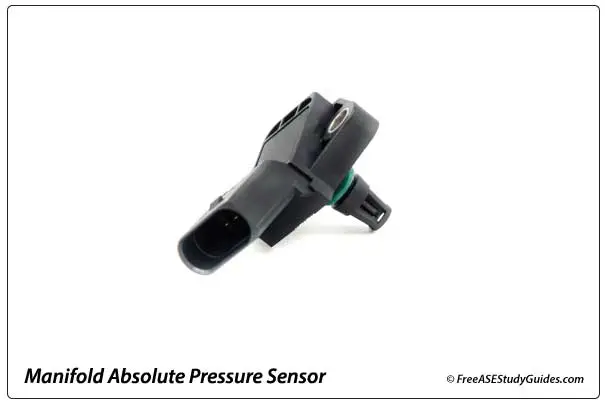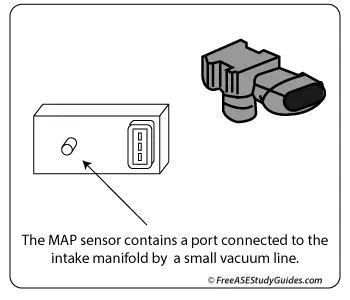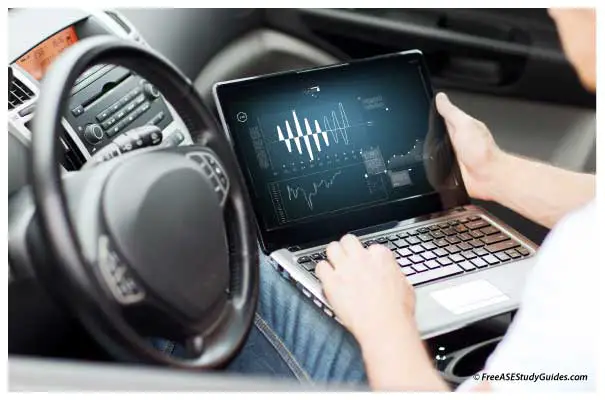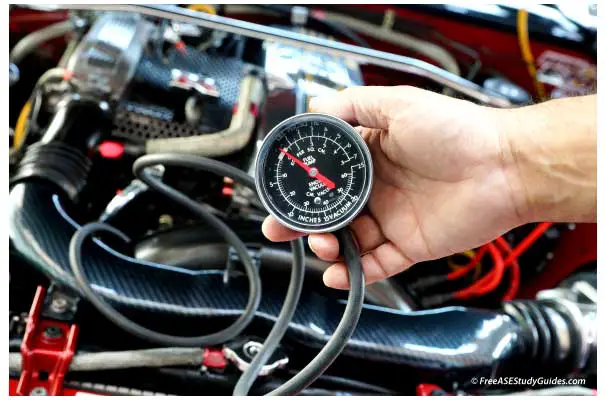Manifold Absolute Pressure Sensor

Most (MAP) Manifold Absolute Pressure sensors look like a small black box bolted to the intake manifold or attached with a vacuum hose. It sends a voltage signal to the ECM regarding the intake manifold's vacuum/pressure. The ECM uses this information and information from other sensors to adjust ignition timing and the air-fuel ratio.

There are two ways of measuring the air flowing into an engine. Older and high-performance vehicles use speed/density to calculate the air-fuel ratio. These vehicles rely primarily on intake air temperature, manifold pressure, and engine speed to make calculations. With these inputs, the ECM can meter fuel to meet airflow and operating conditions. However, a faulty MAP on a speed/density engine can wreak havoc, causing hard starting and severe performance issues.

Newer cars typically have (MAF) Mass Air Flow sensors that take measurements directly from the air tube. Some engines have both. The MAP sensor monitors the EGR valve and provides a backup for the MAF.
The sensor is also used as a barometric pressure sensor, informing the ECM of atmospheric pressure conditions. It tells the ECM of air pressure by altitude. For example, the air has less pressure and is thinner on a mountain than on a beach.

Test MAP sensor operation with a scan tool and a multimeter. Manufacturers provide resistance and voltage testing information for this sensor. Check these specifications before proceeding. The voltage should be low at idle and increase proportionally with engine speed.

Inspect the vacuum hose and port for cracking and blockage that can corrupt the signal. Install a vacuum gauge and compare the result with the scanner. The intake manifold vacuum is 18 "hg to 21 "hg at idle.